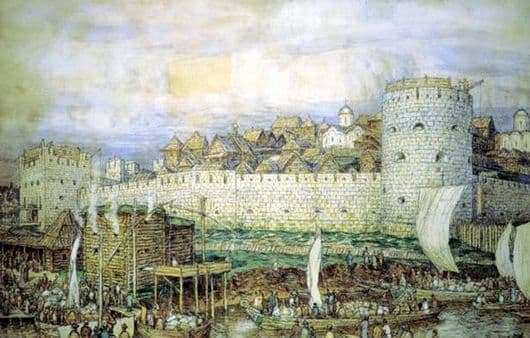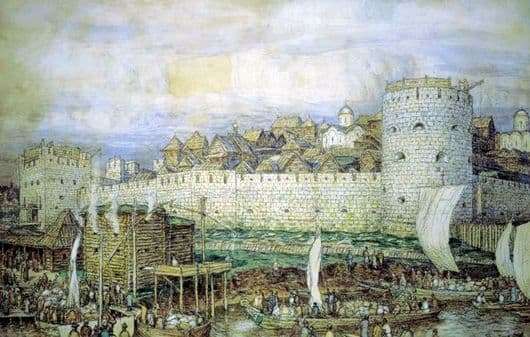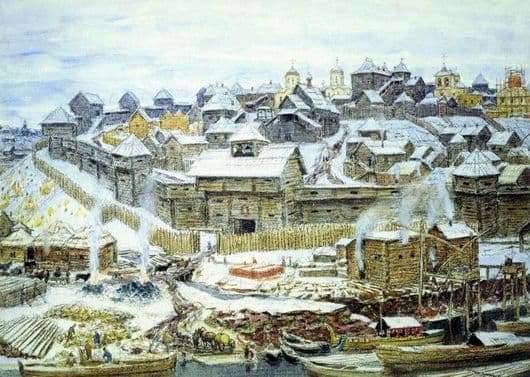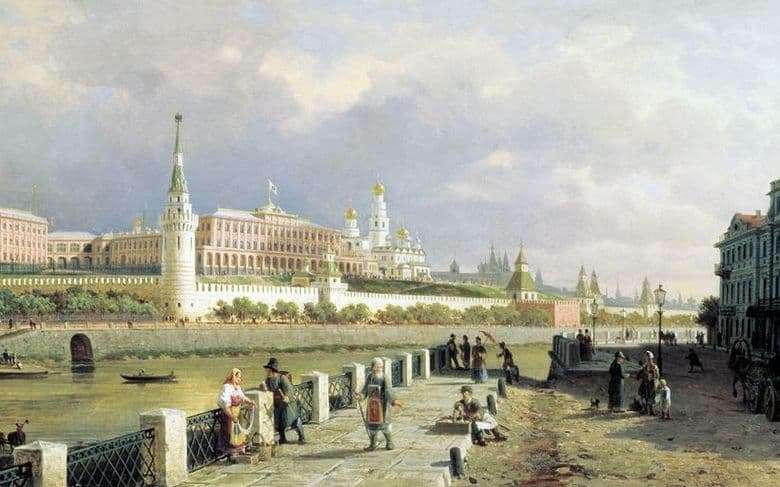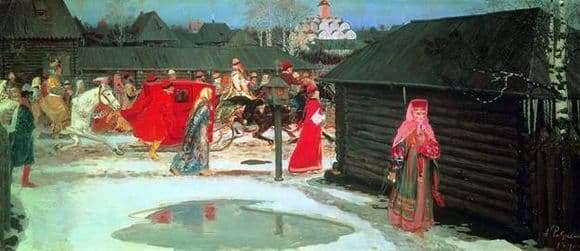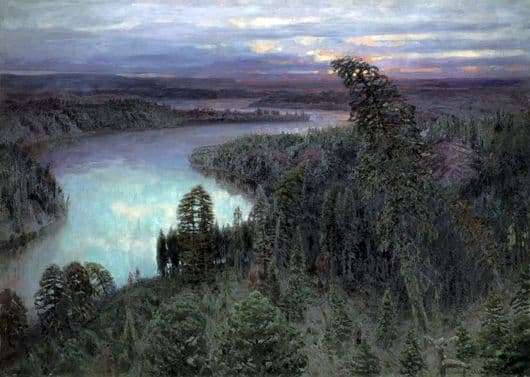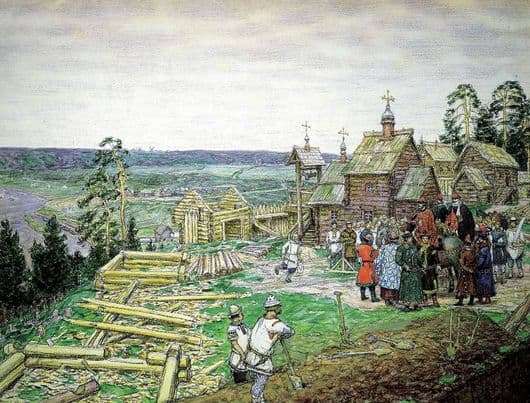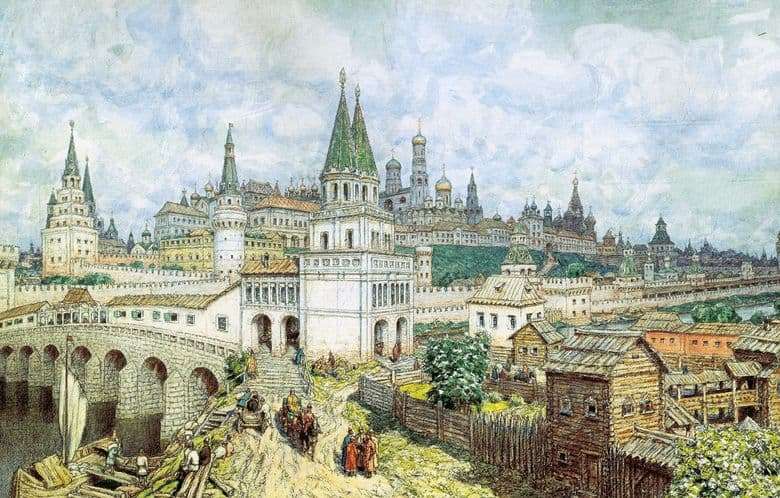
1922; paper on cardboard, pencil, charcoal, watercolor; 64×108; Museum of history and reconstruction of the city of Moscow.
Apollinary Mikhailovich Vasnetsov – the younger brother of the painter Viktor Mikhailovich Vasnetsov, whose famous illustrations to the works of Russian folklore are well known to everyone. Unlike Victor, Apollinaris did not immediately reach the point of making art his main occupation in life. In his youth, he refused to enter the Academy of Arts and for some time worked as a rural teacher.
However, the desire for creativity burned in him. Apollinary Vasnetsov is known for his landscapes of Central Russian nature, as well as sketches and paintings depicting ancient Moscow. Passionately loving this city, Vasnetsov for several years headed a commission to study the history of the Russian capital, dreamed of returning to her the former brilliant appearance.
The painting “The Blossom of the Kremlin” is included in a series of works that have consistently illustrated the life of stone chambers, from the first laying of the walls to the moment of its brilliant completion in the 17th century. The plot of the picture is simple, it is an ordinary everyday scene. In the foreground are groups of people busy with their business. But they are not the heroes of the etude. The majestic array of the Kremlin towers over their heads. Walls, towers, domes, chambers occupy almost the entire picture. Against the background of a bright sky covered with clouds, the Kremlin seems particularly airy, as if it shines with the reflected light of the sun.
This magnificence is breathtaking. The everyday simplicity of a scene is forgotten when a gaze, fascinated by details, performed with incredible skill and love, begins to absorb all parts of a single harmonious whole.
Description of the painting by Apollinari Vasnetsov “The Blossom of the Kremlin. All Saints Bridge and the Kremlin at the end of the XVII century “
